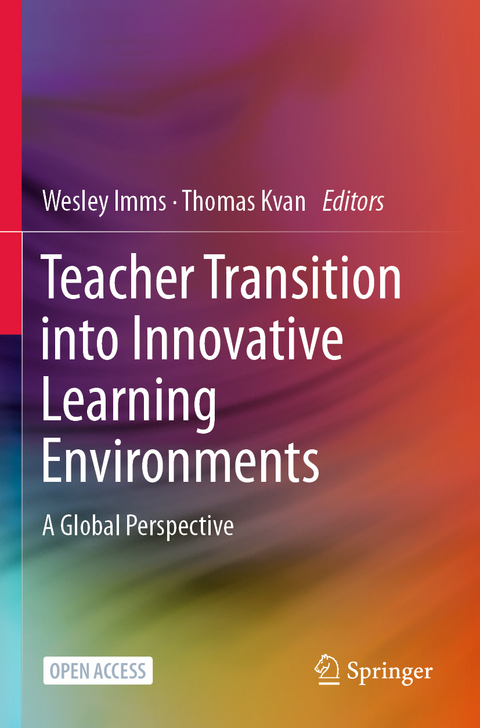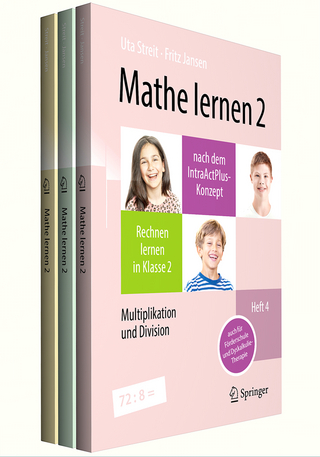
Teacher Transition into Innovative Learning Environments
Springer Verlag, Singapore
978-981-15-7499-3 (ISBN)
The book reports on emerging research in learning environments, with a particular emphasis on how teachers are transitioning from traditional classrooms to innovative learning environments. It offers a significant evidence-based global assessment of current research in this field by designers, architects, educators and policy makers. It presents twenty-five cutting-edge projects from researchers in fifteen countries. Thanks to the book’s comprehensive international perspective, which combines theory and practice in a single publication, readers will gain a wealth of new insights.
Wesley Imms is an Associate Professor of Education at the Melbourne Graduate School of Education, co-director of the Learning Environments Applied Research Network (LEaRN), and director of LEaRN@MGSE. In these roles he teaches in Master’s and Doctoral programs on subjects bridging curriculum and learning environments, and conducts research projects with partners ranging from individual schools to entire education systems. He has authored approximately 90 scholarly papers and reports on learning environment use and evaluation. He has secured extensive external funding for research including the Innovative Learning Environments and Teacher Change (ILETC) project; he is also Chief Investigator for the innovative Plans to Pedagogy (P2P) project, which focuses on building teachers’ spatial competency skills in schools across Australia and New Zealand. Thomas Kvan is recognised for his pioneering work in design, digital environments and design management and has held seniorleadership roles in several universities as Dean and Pro Vice Chancellor. He was the founding co-Director of LEaRN (the Learning Environments Applied Research Network) delivering multidisciplinary research on learning and architecture, and was founding Director of AURIN (the Australian Urban Research Information Network) that developed a national digital infrastructure, both networks hosted at the University of Melbourne. He has published over 180 publications in academic, professional and popular channels. He is currently founding Dean of the School of Design at the South University of Science and Technology (SUSTech) in China.
Preface.- Chapter 1. Spaces are Places in Which we Learn.- Chapter 2. Co-creating Innovative Learning Environments: LEARN's Decade of Discovery.- Part I. Change and Risk.- Chapter 3. Creating a Space for Creative Learning: The Importance of Engaging Management and Teachers in the Design Process.- Chapter 4. The Enactment of Teacher Collaboration in Innovative Learning Environments: A Case Study of Spatial and Pedagogical Structuration.- Chapter 5. School Change: Emerging Findings of How to Achieve the "Buzz".- Chapter 6. Increasing Teacher Engagement in Innovative Learning Environments: Understanding the Effects of Perceptions of Risk.- Chapter 7. Pedarchitecture: Which Learning Environments for the Personalisation of Teaching and Learning? An Educational Architecture for the Schools of the Future.- Chapter 8. Using Fällman’s Interaction Design Research Triangle as a Methodological Tool for Research About Reading Spaces in Schools.- Part II. Inhabiting.- Chapter 9. The Mobility of People, Not Furniture, Leads to Collaboration.- Chapter 10. The Gadfly: A Collaborative Approach to Doing Data Differently.- Chapter 11. Innovative Learning Environments, are they Inclusive? Why Evaluating the Speaking, and Acoustic Potential of the Space Matters.- Chapter 12. What About Interaction Geography to Evaluate Physical Learning Spaces? Post-Occupancy Evaluation.- Part III. Measurement.- Chapter 13. What does Teaching and Learning Look Like in a Variety of Classroom Spatial Environments?.- Chapter 14. Design with Knowledge – Light in Learning Environments.- Chapter 15. Exploring the Relationships Between Learning Space and Student Learning in Higher Education: A Comparative Case Study in China.- Chapter 16. The Creative Learning Spiral: Designing Environments for Flaring and Focusing.- Part IV. Teacher Practices.- Chapter 17. Envisaging Teacher Spatial Competency Through the Lenses of Situated Cognition and Personal Imagination to Reposition it as a Professional Classroom Practice Skill.- Chapter 18. Addressing the Socio-Spatial Challenges of Innovative Learning Environments for Practicum: Harmonics for Transitional Times.- Chapter 19. Hack the School: A Creative Toolkit to Transform School Spaces.- Part V. Conclusion.- Chapter 20. Where to Now? Fourteen Characteristics of Teachers' Transition into ILEs.
| Erscheinungsdatum | 31.01.2022 |
|---|---|
| Zusatzinfo | 78 Illustrations, color; 22 Illustrations, black and white; XV, 334 p. 100 illus., 78 illus. in color. |
| Verlagsort | Singapore |
| Sprache | englisch |
| Maße | 155 x 235 mm |
| Themenwelt | Geisteswissenschaften ► Psychologie ► Pädagogische Psychologie |
| Medizin / Pharmazie ► Medizinische Fachgebiete ► Psychiatrie / Psychotherapie | |
| Sozialwissenschaften ► Pädagogik ► Schulpädagogik / Grundschule | |
| ISBN-10 | 981-15-7499-5 / 9811574995 |
| ISBN-13 | 978-981-15-7499-3 / 9789811574993 |
| Zustand | Neuware |
| Haben Sie eine Frage zum Produkt? |
aus dem Bereich


